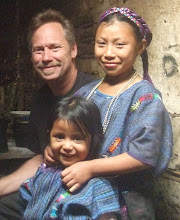Intro to the Cashew By-Products Utilization Project

Cashews are one of the favorites of the world’s nuts, but very few people know much about the rest of the story… the tree is closely related to the mango and a cousin of the poison ivy, it produces a fruit which is technically not really a “fruit” but an engorged stem, the “nut” (really a seed) develops outside the fruit, up to 20% of the shell weight is a valuable industrial chemical, it is raised in countries all around the globe, and the Bill and Melinda Gates Foundation has recently taken a special interest in improving cashew production methods in Africa. Through the African Cashew Initiative, their generous funding seeks to extract more value for Africa from the cashew crop – presently raw nuts are shipped abroad for roasting and packaging, when these operations could be performed locally, benefitting the communities where the nuts are grown. A specific goal is to find more uses for by-products – like the fruit and nut shell – so that small farmers can obtain additional income, improving their quality of life; EWB-SFP has committed to helping find or expand uses of these valuable resources.
 Cashew trees originated in Brazil and were spread by early Portuguese traders (often simply to prevent soil erosion), but they often forgot to spread the word that the “cashew apple” is as delicious and nutritious as the nut – the juice is extremely popular in South America, and in Central America often the nut is discarded as not particularly useful but the apple has an important place in markets. All kinds of prepared foods – jam, chutney, drinks, dried fruit, candy, etc. – are consumed in other cashew producing countries (such as India and Vietnam), but what happened in Africa? Sometimes information just doesn’t flow evenly, and we hope that with some encouragement the situation will change. Of course if it was as easy as that no outside technical assistance would be needed, but in sooth the cashew apple is very soft when ripe so does not transport or store well, and it contains tannins that must be removed because they give it an astringent flavor.
Cashew trees originated in Brazil and were spread by early Portuguese traders (often simply to prevent soil erosion), but they often forgot to spread the word that the “cashew apple” is as delicious and nutritious as the nut – the juice is extremely popular in South America, and in Central America often the nut is discarded as not particularly useful but the apple has an important place in markets. All kinds of prepared foods – jam, chutney, drinks, dried fruit, candy, etc. – are consumed in other cashew producing countries (such as India and Vietnam), but what happened in Africa? Sometimes information just doesn’t flow evenly, and we hope that with some encouragement the situation will change. Of course if it was as easy as that no outside technical assistance would be needed, but in sooth the cashew apple is very soft when ripe so does not transport or store well, and it contains tannins that must be removed because they give it an astringent flavor. Making full use of the nut shells has its tricky parts too – while the oil in them (CNSL) is valuable for use in polymers, coatings, and auto brake components it is also noxious (it causes a skin rash much like that from poison ivy) and difficult to extract. Again, sometimes we need to move technologies around the world, adapting them to new circumstances – our challenge is to do it in a way which is most appropriate for Africa. With or without the oil, the shells have a high energy content, making them suitable for providing process heat for industry or fuel for improved household cooking stoves… except that the simple technologies needed
Making full use of the nut shells has its tricky parts too – while the oil in them (CNSL) is valuable for use in polymers, coatings, and auto brake components it is also noxious (it causes a skin rash much like that from poison ivy) and difficult to extract. Again, sometimes we need to move technologies around the world, adapting them to new circumstances – our challenge is to do it in a way which is most appropriate for Africa. With or without the oil, the shells have a high energy content, making them suitable for providing process heat for industry or fuel for improved household cooking stoves… except that the simple technologies needed  to turn them into charcoal or briquettes don’t exist there yet, and when burned in a typical way the oil produces an unacceptable amount of very unpleasant/acrid smoke. For now the landscape is littered with huge piles of messy shells, while scarce wood resources are consumed in their place.
to turn them into charcoal or briquettes don’t exist there yet, and when burned in a typical way the oil produces an unacceptable amount of very unpleasant/acrid smoke. For now the landscape is littered with huge piles of messy shells, while scarce wood resources are consumed in their place.
What can ATDT do to improve the situation? As always, we’ll first seek to become minor experts in apple and shell uses around the world (we always do our homework), learning how these problems perhaps have been overcome in other places, and we’ll visit West Africa to see what the people and communities there value. Without meeting our local partners (GTZ manages the program, but there is a whole suite of professionals from TechnoServe, the African Cashew Alliance, Costco, and similar involved) and our end customers (the small farmers and cashew processors who would benefit from new ways to utilize these “waste” products) we can’t determine what paths might be best. We also have members who have recently visited Brazil and Vietnam, to examine their situations and see what we might learn from them.
Next: results of the site visit to West Africa!

